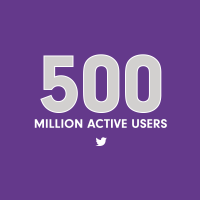 With over 500 million active users, Twitter is an important channel of influence in US culture, and that includes the people you’re most interested in finding: potential car buyers. Car dealers all over the country are using Twitter to direct traffic back to their site, to reach out to the community, and to advertise.
With over 500 million active users, Twitter is an important channel of influence in US culture, and that includes the people you’re most interested in finding: potential car buyers. Car dealers all over the country are using Twitter to direct traffic back to their site, to reach out to the community, and to advertise.
According to an article in Advertising Age, in 2013 marketing analytics company MarketShare concluded that Twitter drove $716 million in auto sales among 20 specific nameplates through Twitter Ads, positive brand mentions, amplification of TV advertising, and the Twitter activity of the automakers themselves. Twitter may be a bigger influencer than you thought.
If you’re not currently using Twitter, it’s not difficult to set up an account and get started. Choose a handle that reflects who and where you are, and start engaging in conversation, 140 characters at a time. If you can add it to your budget, it’s a great idea to hire a consultant or agency to help you set your strategy and put you on course to use this channel to your best advantage.
In conjunction with your other social media channels, it’s important to make sure that the content your dealership shares on Twitter is engaging. While you want to drive traffic to your site with Twitter, you want to be sure you’re posting things people want to read.
For instance, if you post a how-to post about car purchasing to your dealership site, it’s excellent content fit to share. But in addition to sharing your own content, you should share other relevant content that fits your audience. Did you see a great post somewhere? Share it and cite the source.
Four key tips:
- Are you wondering how Twitter can help your automotive dealership when all of your customers are local? Go to: https://twitter.com/search-home and search for terms like “car shopping”, “need a new car”, “looking at cars”, and so on. Then hone in on your area with city and/or zip code, as well.
- Watch out for too many self-mentions: think about what your customers love about you and your dealership and provide them with information that helps them, as opposed to a constant barrage of selling. As Jay Baer – the most retweeted person in the world by digital marketers and author of five New York Times best-selling books – says, “Smart marketing should be able help, not hype.”
- It’s important to respond to your customer base on Twitter. If someone complains about your dealership via Twitter, you must respond in a professional manner. If someone praises you, know how to share that accolade. If you have someone on your staff who is social-media savvy, he or she can help you handle the praises and complaints and drive the message. If you don’t, hire someone to help…at least until you get your feet wet.
- Twitter can also strengthen the impact of TV ads by coordinating corresponding tweets that give the messaging more reach. If a user is engaged enough with a TV show to tweet about it, he or she is very likely to have seen the commercials. Use those hashtags!
Do a little reconnaissance and find out if your local and regional competitors are using Twitter, and take a look to see what they’re sharing. Are they generating engagement? Are they responding? If not, this is your chance to get ahead.
